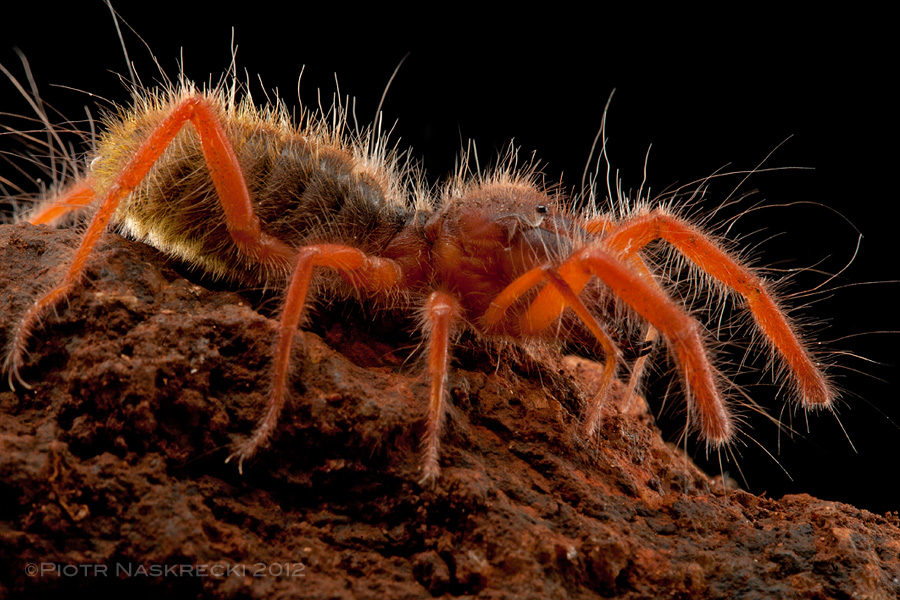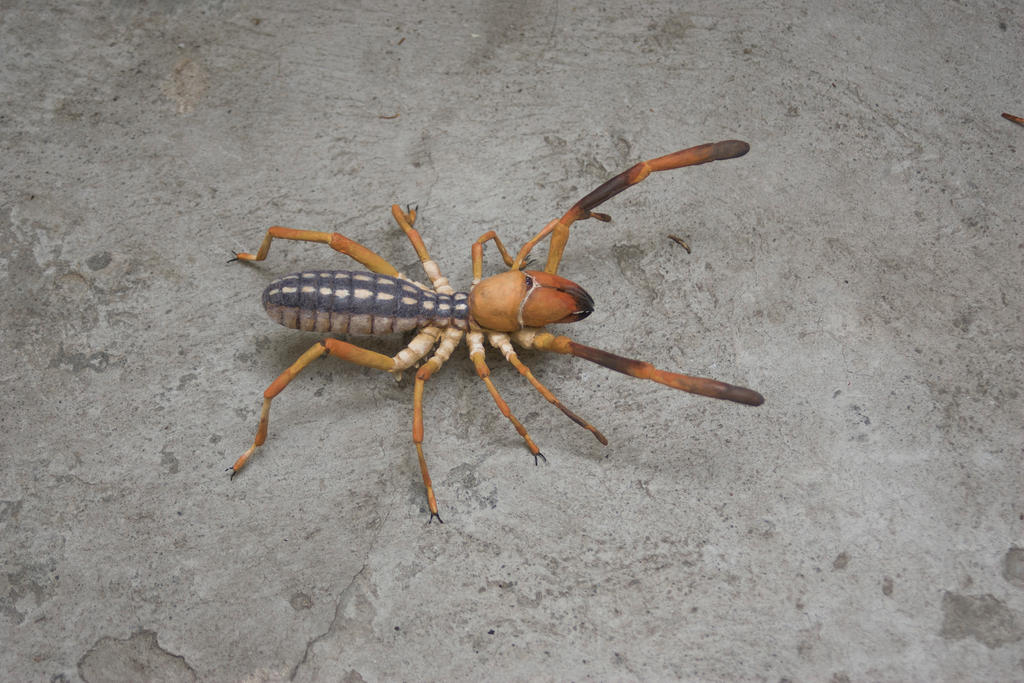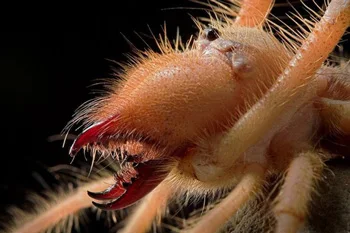Variety Overview
The Sunspider (Latin name: Arachnid Solifugae), also known as the sun spider, wind scorpion, day scorpion, or camel spider, primarily inhabits tropical and subtropical regions as well as arid and semi-arid wastelands like Gobi deserts and other deserts. This non-venomous yet fierce arthropod has a narrow connection between its cephalothorax and abdomen. It possesses a pair of simple eyes but no venom glands. Its chelicerae are large and strong; its pedipalps lack claws but have suckers for gripping. The base of its last pair of legs is equipped with numerous sensitive sensory organs. Mostly nocturnal by nature, they dwell in burrows, rock crevices or other animals’ holes.
The Sunspider measures about 7 cm in body length. The tarsus of its first pair of legs consists of one segment while those of the second and third pairs consist of four segments each. Apart from the first pair of legs which are relatively smooth, the other legs are smoother still. Due to their secluded habitats which are rarely visited by humans, even foreign breeders are few; large species can also be found in Xinjiang, China.
English Name: Sunspider
Kingdom: Animalia
Phylum: Arthropoda
Class: Arachnida
Order: Solifugae
Family: Solifugidae
Genus: Solifugae
Species: Solifugae
Distribution: Predominantly found in hot and dry areas; most species exhibit a golden yellow color.
Design Characteristics
The abdomen is hairy and round, with front appendages that resemble those of a scorpion. The body length varies from 10 to 50 millimeters. These creatures are extremely voracious eaters; the largest species can even kill small vertebrates. The chelicerae (the first pair of appendages) are large, pincer-like, and toothed. The pedipalps (the second pair of appendages) are leg-like with suction cups at the ends for capturing prey. The fourth pair of legs has paddle-shaped organs known as balancers, which serve as sensory organs. They are commonly found in Africa, India, Indonesia, and North America, and also in western China.

Living Habits
Sharp Fangs
This female camel spider (also known as the Solifugae) looks like a monster straight out of a child’s nightmare, exuding aggression. Camel spiders move with lightning speed. Although they rarely exceed five centimeters in length, they can easily bite a grasshopper in half. These spiders, scientifically known as solifugids, inhabit desert regions in Africa, Asia, Europe, and the Americas.
Nowhere to Hide
This male camel spider was originally hiding under a rock in Baja California. Once its cover was blown, it quickly fled to a new hiding place. Some species prefer shallow sand dunes, while others live on rugged hillsides or under desert shrubs. In North Africa, there is a superstition that people sleeping on the desert ground might have their faces eaten by camel spiders, their legs dissolved, or eggs laid under their skin. While these fears are unfounded, these creatures do release an enzyme that can dissolve their prey.
Dangerous Affairs
A male camel spider in heat uses its pedipalps and large chelicerae to touch the female (right), putting her into a hypnotic state where she stops all movement. Throughout the mating process, the female remains in a state similar to “death feigning” until the male leaves. For a male camel spider, this “romantic affair” is fraught with danger; an uninterested female might attack and devour him.
Dining Together
In a rare occurrence, a male and female camel spider teamed up to capture prey and even shared the meal together. This situation is extremely uncommon and usually only happens in areas with abundant food sources, such as well-lit places that attract insects. Typically, camel spiders are more likely to hunt each other for food.
Harsh Environment
While camel spiders are formidable hunters, they are not the top predators of the desert world. There is a species of sand scorpion (right) with a stinger that spells death for them. Camel spiders are not true scorpions and therefore cannot sting with their tails. Various spiders, insects, reptiles, birds, and mammals prey on them; even some wasps, silverfish, and ants can eat their eggs and young.
Voracious Eaters
When it comes to nutrition, camel spiders follow a low-carb, high-protein diet. This is evident from a female feasting on a desert night lizard in California’s Mojave Desert. Camel spiders are nocturnal creatures that use various chemical and mechanical methods to detect prey. Their pedipalps (leg-like appendages) have sensory organs and adhesive pads at the tips to help them grasp prey and climb. They typically consume live animals but will also eat dead ones.

Feeding Techniques
With large pincers, an almost insatiable appetite, and the speed of a sprinter, this highly aggressive desert resident is naturally a killer. In the early morning sun of the Israeli desert, a strange little creature stared at me before quickly darting back into its burrow. Its round eyes, furry limbs, and prominent arm-like pincers made it look like something out of a nightmare. I approached it cautiously—though solifuges aren’t venomous, their bite can cause intense pain in humans and can be fatal to their prey. These frenzied carnivores attack insects, rodents, lizards, snakes, and small birds using their pincers that are as long as one-third of their body length.
In terms of body proportion, this “big mouth” is among the largest in the animal kingdom. They use their pincers like saws to grind their prey into tiny pieces before secreting an enzyme to liquefy them and then sucking them into their stomachs.
During the Iraq War, solifuges were dubbed “official spiders.” A soldier described one as “the most bizarre-looking creature,” leading to various legends about them spreading rapidly. For instance, some claimed these creatures could run at speeds up to 40 kilometers per hour or make crying sounds like babies; others said they would crawl into camels’ stomachs and eat voraciously until the camels’ bellies burst open. None of these tales are true. In reality, solifuges can only run about 1.6 kilometers per hour without making any noise and feed on small desert creatures like insects and lizards. Their terrifying appearance has long astonished military forces in the region: during World War I, soldiers stationed in Egypt would capture solifuges for “solifuge fights” and place bets on the outcomes.
